Brazil 2016 "Geopark Araripe"
| <prev | back to index | next> |
| Issue Date | 21.11.2016 |
| ID | Michel: 4474-4475, Scott: 3349a-b, Stanley Gibbons: , Yvert et Tellier: 3620-3621, Category: pR |
| Design | Photos: Marcos Nascimento |
| Stamps in set | 2 |
| Value | 1" Class Rate for Domestic Commercial Mail: R$ 1,70 - Dragonfly Fossil R$ 1,70 - Moth Fossil |
| Emission/Type | commemorative |
| Places of issue | Crato |
| Size (width x height) | 40mm x 30mm |
| Layout | Sheet of 24 stamps (12 pairs) |
| Products | FDC x1 |
| Paper | gummed chalky paper |
| Perforation | 11.5 x 12 |
| Print Technique | Offset, photography techniques and computer graphics |
| Printed by | Brazilian Mint |
| Quantity | 360,000 stamps (180,000 of each) |
| Issuing Authority | Empresa Brasileira de Correios e Telegrafos |
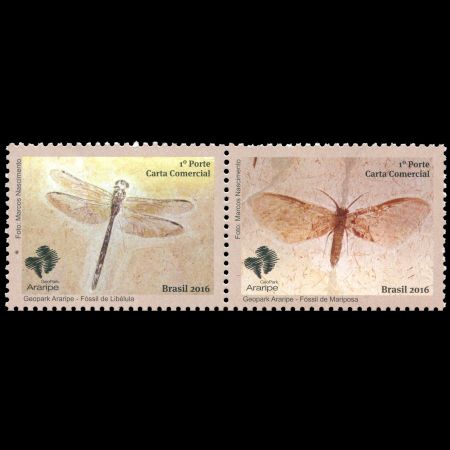
On 21st of November 2016 the Post Authority of Brazil issued the stamps set ""Geopark Araripe". The stamps were created by photography techniques and computer graphics were used.
The following text was written by Álamo Feitosa Saraiva Coordinator of the laboratory of Paleontology (Life Sciences/URCA), Flaviana Jorge de Lima Laboratory of Palaeontology of URCA, Marcelo Martins de Moura Fé Executive Director of the Araripe GeoPark Laboratory of Geomorphology and Pedology (DEGEO/URCA)
"In this issue, the Post Office presents the Araripe GeoPark, addressing the biological, geological and paleontological importance of this natural universe of the Brazilian North-East. Created in 2006, recognized by the United Nations Educational, Scientific and Cultural Organization - UNESCO.
The stamps feature in a matte background, two images of insects fossils, which were found in the Araripe GeoPark and represent, quite simply, the wealth of its natural diversity.
On the first stamp, a dragonfly embedded in the rock is shown in detail. The other stamp, displays the fossilized image of a moth.
On each of the stamps, as well as the First-Day-of-Issue Postmark, the logo of the Araripe GeoPark is present, crafted from a stylized outline from a part of the Pangaea.
This paleogeographic map shows how South America and Africa were connected as part of Pangaea prior to the opening of the modern Atlantic Ocean which separated these continents.
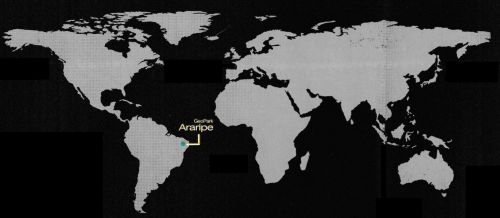 |
| The Araripe GeoPark on the World map |
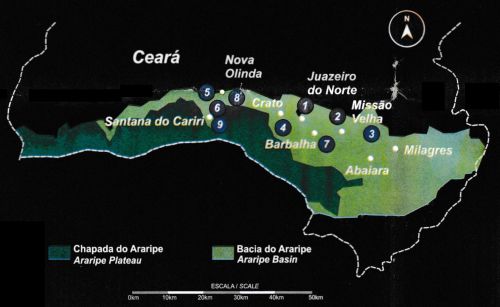 |
| The map of Araripe GeoPark |
The Crato Formation is composed primarily of laminated limestones. The Crato Formation was deposited in a lacustrine (lake) system similar to the modern East African Rift Valleys. The well preserved fossils include a variety of animals that lived in and around the lakes including fish, pterosaurs, reptiles and amphibians, insects, and plants.
The Romualdo Formation is a slightly younger formation than the Crato formation but deposited under similar lacustrine conditions. Instead of limestones, the Romualdo is composed of primarily shale with carbonate concretions. The concretions are concentrated zones of cement that precipitated around bones and shells. The Romualdo fauna includes fish, pterosaurs, turtles, crocodiles, dinosaurs, and plants.
Together, these two formations are considered Konservat Lagerstatte. They are sites of exceptional preservation of fossils. The excellent preservation of these fossils is the reason the park exists as they represent the unique natural history of the site.
Some details about the insects.
Dragonfly Fossil
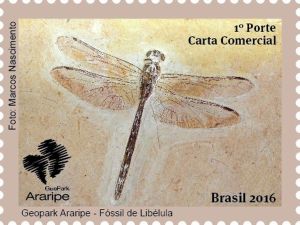 |
| Dragonfly Fossil on stamp of Brazil 2016, MiNr.: 4474, Scott: 3349a. |
The dragonfly, a symbol of the Museum of Paleontology of URCA, in Santana do Cariri-CE, is one of the most beautiful and impressive fossils in the collection of this Museum and is a true icon of the Araripe GeoPark and the Brazilian Paleontology.
In the past, at least 120 million years ago, around a large lake, several species of dragonflies were hovering above its waters.
The dragonfly fossils of the Crato formation are extremely similar to dragonflies found in Chapada do Araripe.
These insects are part of the order Odonata, which has a life cycle that is closely connected to water bodies and which appeared in the Paleozoic, conserved, until today, with the same general morphological characteristics.
Moth Fossil
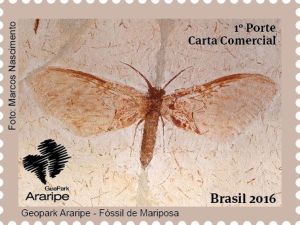 |
| Moth Fossil on stamp of Brazil 2016, MiNr.: 4475, Scott: 3349b. |
The Empire Moth is a type of Lepidopteran which flew through the air in the region that today is Brazil during the early Cretaceous. These moths after death settled to the lake bottom and were deposited with the laminated limestones of the Crato Formation.
Lepidopteran fossils are extremely rare in these rocks and the majority of fossils are known from isolated wings.
Thus, this beautiful specimen from the Museum of Paleontology of URCA is unique due to the exceptional preservation of the entire body of the animal, including delicate parts such as the antennas.
The most extraordinary aspect of this fossil is the preservation of the color pattern of the wings of the moth."
Products and associated philatelic items
| FDC | ||
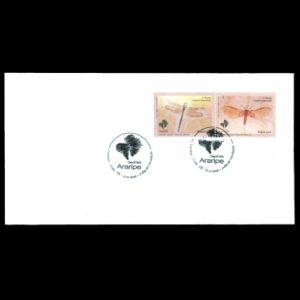 |
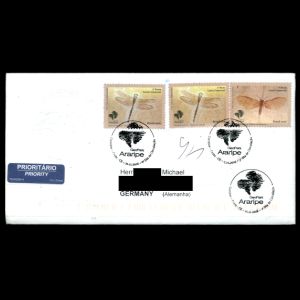 |
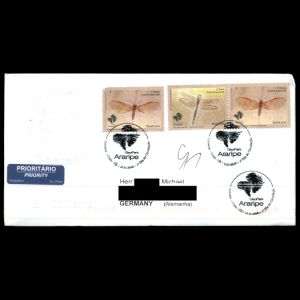 |
| The official FDC produced by Brazilian Post was on a white cover without cachet. The cover is engraved with the name of the Post: Correios. | ||
| First-Day-of-Issue Postmark | Stamps Sheet | |
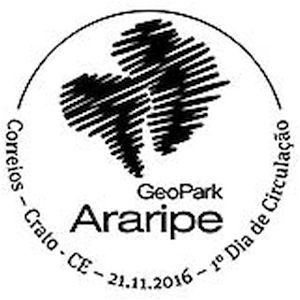 |
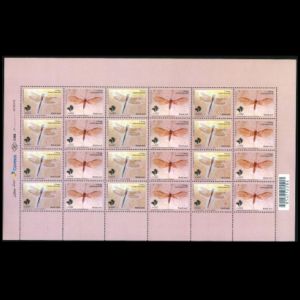 |
|
| Example of circulated covers | ||
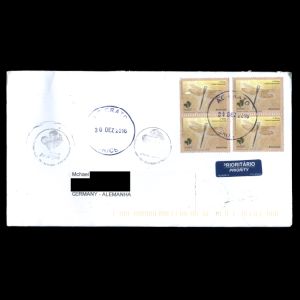 |
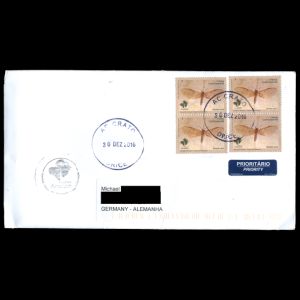 |
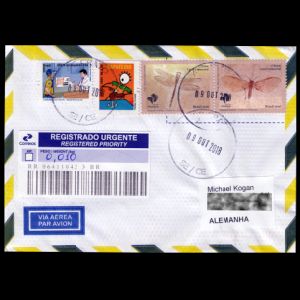 |

|
- Technical details and description of the stamps: Official booklet (PDF file),
- ARARIPE UNESCO GLOBAL GEOPARK: official website, UNESCO, Wikipedia (in German), Flyer from the tourism office (PDF file).
- The Crato Formation: Wikipedia,
- The Romualdo Formation: Wikipedia,
Acknowledgements:
Many thanks to Dr. Peter Voice from Department of Geological and Environmental Sciences, Western Michigan University, for his help to find an information for this article, the draft page review and his very valuable comments.
| <prev | back to index | next> |